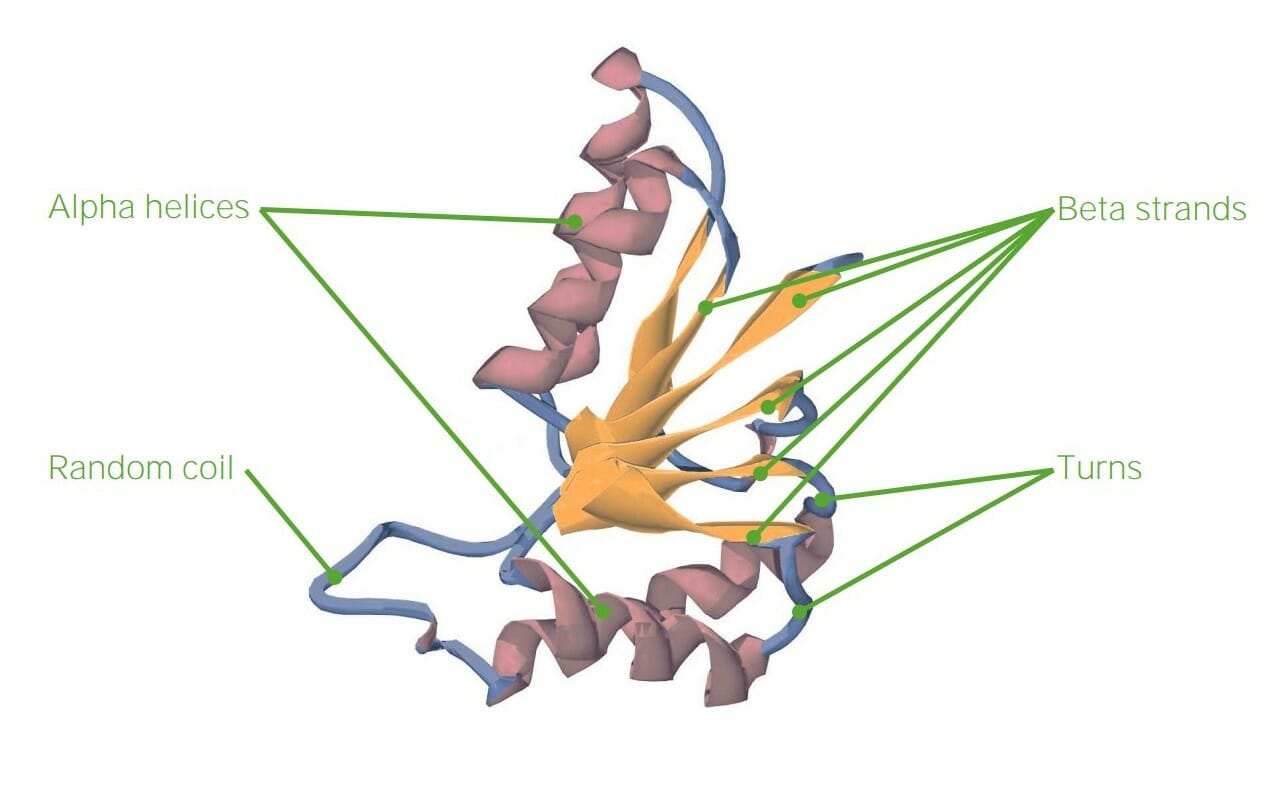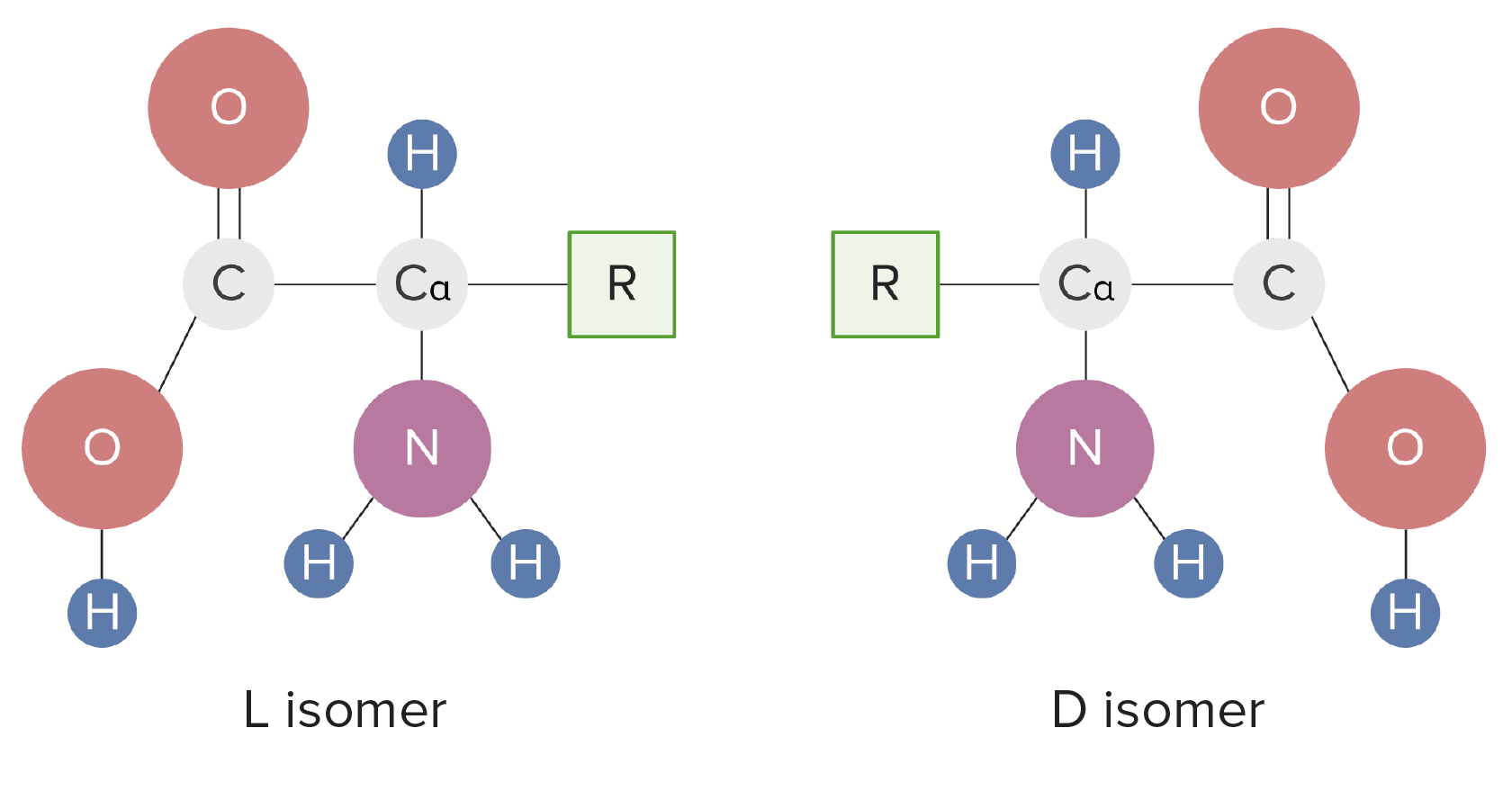Playlist
Show Playlist
Hide Playlist
Amino Acids, Peptides and Proteins – Amines
-
Slides 09 Chemistry Advanced Le Gresley.pdf
-
Download Lecture Overview
00:01 Of course, amino acids, as individual molecules, do not necessarily exist on their own. They’re joined by peptide bonds to form a polypeptide chain, which then goes on to form a protein. An amino acid unit, such as that which I showed you in the previous slide, which is found within a polypeptide polymer, is called a residue. Here we have an example of how a dipeptide can be formed. We have, in this case, two amino acids coming together and they’re linking in in the order from the nitrogen to the carboxylic acid which is attached to a nitrogen to form a peptide or amide bond. So, you should recognise that as an amide bond from our discussion of the reactions of amines with acid chlorides and acid anhydrides. 00:44 And a polypeptide chain has a direction and this is when it comes to the biological synthesis of polypeptides for protein synthesis because its building blocks have a different end: the alpha amino and the alpha carboxylic acid groups. 00:58 And by convention, from a biological perspective, the amino end is called the N-terminus and is taken as the beginning of a polypeptide chain and the C end is known as the C-terminus, which is taken as the end. However, when we actually synthesise these, those roles tend to be switched around a bit by virtue of some of the restrictions on group protection and so forth, which fall beyond the scope. But, if you are interested, I’m sure you can find out more. So, N-terminus here on the left hand side and C-terminus on the right hand side, shown in red. Right. So, here we have an example of aspartame, a dipeptide which is synthesised from aspartic acid and phenylalanine methyl ester. So, note the identification of the alpha amino acid component. If we look at our aspartic acid, the alpha amino acid component is where we have that stereogenic center, which is indicated by the dashed lines going up to the NH2 unit. And what we’re showing here is the formation of a carboxylic… of an amide from the carboxylic acid and the amine of the phenylalanine methyl ester. And this is an amide bond which is formed between the two. Now, if you recall, I said that it was rather difficult for us to be able to synthesise this just using heat and a bit of acid. And the reality is that if you’re making dipeptides, you would usually use a coupling agent such as DCC, EDCI, a combo or a number of others. 02:29 So, we’ve seen how to create a dipeptide from two amino acids and polypeptides consist of a large number of amino acids joined together in the same way. The boundary for the definition of a protein in terms of the number of amino acids is actually rather blurred. 02:45 In some of the cases of the larger proteins, thousands of amino acids, or residues, are the result. If, on the other hand, we look at some of the smaller proteins, then hundreds of amino acids can be used to form them. Proteins are very important and the orientation of amino acids and their hydrogen bonding and also their potential for ionisation are absolutely essential for their biological activity. And this is what we will see in Module IV. 03:14 At the moment, though, we… this brings an end to Module III and we’ll be focusing more along the biological applications of the chemistry that you’ve learned so far in the next module.
About the Lecture
The lecture Amino Acids, Peptides and Proteins – Amines by Adam Le Gresley, PhD is from the course Medical Chemistry.
Included Quiz Questions
Complete the following statement. Amino acids polymerize with each other via the formation of ...
- ... peptide bonds to form a chain called peptide.
- ... α-1,4-glycosidic bond to form a chain called peptide.
- ... β-1,4-glycosidic bond to form a chain called peptide.
- ... phosphodiester bond to form a chain called peptide.
- ... an ester bond to form a chain called peptide.
Customer reviews
5,0 of 5 stars
| 5 Stars |
|
5 |
| 4 Stars |
|
0 |
| 3 Stars |
|
0 |
| 2 Stars |
|
0 |
| 1 Star |
|
0 |





